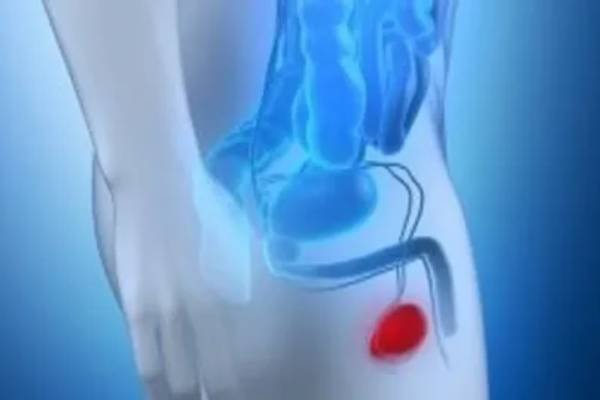Among the most often occurring malignancies afflicting men globally is prostate cancer. Many find that the most successful course of therapy is surgical intervention. Although open surgery has long been the norm, recent developments in medical technology have resulted in the minimally invasive robotic prostatectomy—a procedure that increases accuracy and lowers recuperation times.
Robotic prostatectomy as a treatment for prostate cancer will be discussed in this paper together with its benefits, technique, recuperation, and possible hazards.
What is Robotic Prostatectomy?
Robotic prostatectomy is a type of minimally invasive surgery used to remove the prostate gland in men diagnosed with prostate cancer. This procedure is performed using the da Vinci Surgical System, which allows surgeons to operate with enhanced precision through small incisions.
Key Benefits:
- Minimally invasive: Smaller incisions, less scarring.
- Precision: Enhanced control and accuracy during surgery.
- Faster recovery: Reduced hospital stay and quicker return to normal activities.
- Reduced blood loss: Less trauma to surrounding tissues.
How Does Robotic Prostatectomy Work?
The robotic prostatectomy procedure is carried out with the help of robotic arms controlled by a highly trained surgeon. The system translates the surgeon’s hand movements into smaller, more precise movements of surgical instruments.
Steps Involved:
- Small incisions: Several small incisions are made in the abdomen.
- Insertion of robotic arms: Robotic arms equipped with surgical tools are inserted through these incisions.
- 3D imaging: A high-definition 3D camera provides the surgeon with a magnified view of the prostate.
- Prostate removal: The surgeon uses the robotic instruments to carefully remove the prostate gland and any affected surrounding tissues.
Why Choose Robotic Prostatectomy?
- Greater Precision
The robotic system provides surgeons with a higher degree of dexterity and accuracy. This minimizes the risk of damaging nearby nerves and tissues, which can help preserve important functions such as urinary continence and sexual function.
- Smaller Incisions
Compared to open surgery, robotic prostatectomy involves smaller incisions, leading to less post-operative pain, reduced risk of infection, and minimal scarring.
- Shorter Recovery Time
Patients who undergo robotic prostatectomy typically experience a quicker recovery period. Many patients can go home within 24 hours after surgery and return to normal activities within a few weeks.
The Robotic Prostatectomy Procedure in Detail
Before Surgery
- Consultation: A thorough evaluation with a urologist specializing in robotic surgery is conducted.
- Pre-operative tests: Blood tests, imaging scans, and other diagnostics are completed.
- Preparation: The patient is instructed to avoid certain medications and follow fasting guidelines.
During Surgery
- Anesthesia: The patient is put under general anesthesia.
- Operation: The surgeon makes small incisions to insert the robotic instruments. The procedure typically lasts between 2 to 4 hours.
After Surgery
- Recovery room: Patients are moved to a recovery room post-operation, where vital signs are monitored.
- Hospital stay: Most patients are discharged the next day, but a short stay might be needed depending on individual recovery.
Recovery After Robotic Prostatectomy
The recovery process following robotic prostatectomy is generally faster and smoother than traditional open surgery.
Post-operative Care Tips:
- Managing pain: Patients may experience some discomfort, but pain is typically mild and manageable with over-the-counter medications.
- Catheter care: A urinary catheter may be required for about a week after surgery.
- Physical activity: Light walking is encouraged, but strenuous activities should be avoided for 4 to 6 weeks.
- Follow-up appointments: Regular follow-ups are necessary to monitor healing and check for complications.
Potential Risks and Complications
As with any surgery, there are potential risks involved with robotic prostatectomy, though they are relatively rare.
Possible Risks Include:
- Infection: Although the risk is low due to smaller incisions, infections can still occur.
- Urinary incontinence: Some patients may experience temporary or long-term issues with urinary control.
- Erectile dysfunction: While robotic surgery aims to preserve the nerves responsible for erections, some men may still experience erectile dysfunction post-surgery.
- Bleeding: There is typically less blood loss than in open surgery, but bleeding can still occur.
Success Rates and Outcomes
Robotic prostatectomy has shown excellent outcomes for many prostate cancer patients. With high success rates in cancer control and a lower rate of side effects, it has become the preferred option for many surgeons and patients alike.
Benefits for Long-Term Health:
- High cancer control rates: Robotic prostatectomy provides a high likelihood of removing all cancerous tissue, significantly reducing the risk of recurrence.
- Improved quality of life: With better preservation of urinary and sexual function, many men report higher satisfaction after recovery.
Conclusion
Modern prostatectomy, a treatment for prostate cancer, has great benefits over conventional surgical techniques. For men diagnosed with prostate cancer, its minimally invasive character combined with accuracy and faster recovery makes it a quite successful choice.
To find out whether robotic prostatectomy is the best option for you, though, you should talk with a trained urologist in Charlotte about your risks and benefits. As technology develops, prostate cancer surgery is becoming better, giving patients hope for improved results and quality of life.
This organised handbook offers a thorough summary of robotic prostatectomy, therefore arming patients and carers with clear, succinct knowledge to enable them to make wise treatment choices.



